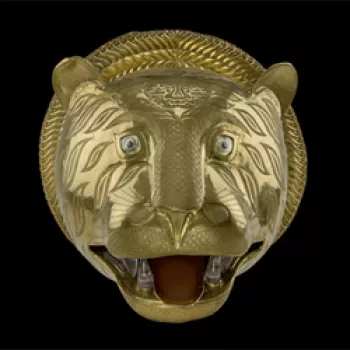Design for the State Coach 1760
Pen and ink and watercolour over pencil | 34.1 x 60.8 cm (whole object) | RCIN 917942
-
Pen and ink and watercolour design for the King's State Coach, shown from the side.
According to the official journal of the Department of the Master of the Horse for 1760, ‘At the Commencement of this Reign [25 October 1760] a very superb State Coach was order’d to be built, after several Designs & Drawings, made for that purpose and shewn to the Master of the Horse, were examined & the approv’d parts thereof thrown into one by Mr. Chambers.’ The inscription on the present drawing suggests that it was made at this early stage. The complexity of the design and manufacturing process meant that the new coach remained far from complete at the time of the King’s coronation in September 1761; indeed the final design was still being discussed in June and July 1762. The new coach was first used for the State Opening of Parliament on 25 November 1762; George III used it for subsequent state openings and it has continued to be used - for state openings, coronations and other important occasions - over the last 240 years. Adjustments have been made to increase the passengers’ comfort. When not in use it is on display in the Royal Mews at Buckingham Palace.
The coach cost over £7,500, of which Samuel Butler (the coachbuilder) received £1,673 15s, Joseph Wilton (the sculptor) £2,500 and G.B. Cipriani (the painter) £315. Wilton’s role in the overall design was crucial and ensured the artistic homogeneity of figures and architecture: the coach as actually built differed in several respects (particularly concerning the placing of figures) from its appearance in this initial design by Chambers.
The coach was the most superb and expensive ever built in England and its design and decoration are replete with symbolism. Thus it serves as ‘a triumphal peace-chariot’, and a ‘rolling manifesto for the first Hanoverian monarch to have been born in England’. When riding in the coach, the King would appear as Neptune, monarch of the seas, and also Apollo, leader of the muses of artistic innovation. This design shows the nearside of the coach with paintings (on the door and panels) of Mars and Minerva, with Mercury to symbolise peace. The antiquary and patriot Thomas Hollis (1720-74) was a key figure in the evolution of the decorative programme. In the course of his travels in Italy in the early 1750s he had met each of the artists involved. In late 1762 he paid repeated visits to Wilton’s studio to advise Cipriani on his decorative painting. Among the unsuccessful competitors for the commission were Samuel Butler and his nephew John Linnell, whose design was engraved in 1761, and Robert Adam, whose design has not survived.
Chambers’s role in the design of the coach presumably arose from his position as the King’s architectural tutor: he was only appointed Joint Architect in November 1761. The coach was one of a number of non-architectural projects in which Chambers came to be involved. In the course of building work at Buckingham House in the 1760s and 1770s there were numerous occasions when his advice would be sought.
Catalogue entry adapted from George III & Queen Charlotte: Patronage, Collecting and Court Taste, London, 2004Provenance
Made for George III; purchased by George IV when Prince Regent from Colnaghi & Co., 1 June 1811 for 4 guineas (Royal Archives GEO/MAIN/27638, 'The King's State Coach by Sir W. Chambers, the figures by Cipriani - fine, £4 4s')
-
Medium and techniques
Pen and ink and watercolour over pencil
Measurements
34.1 x 60.8 cm (whole object)
Other number(s)
RL 17942










